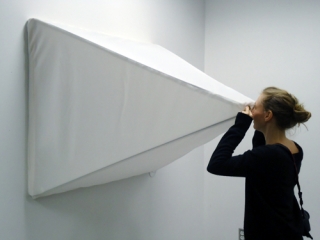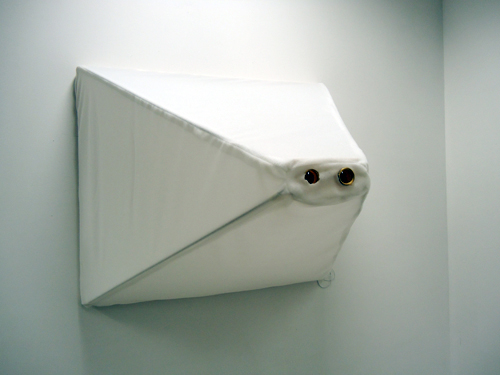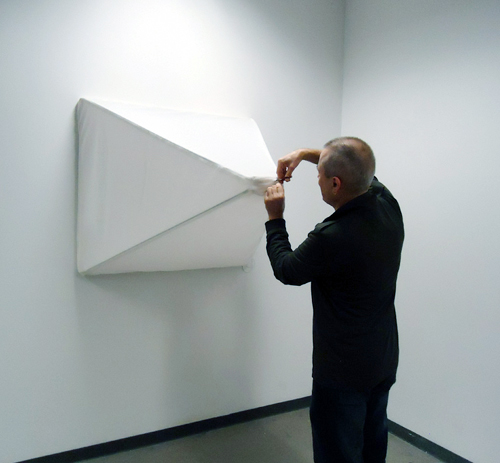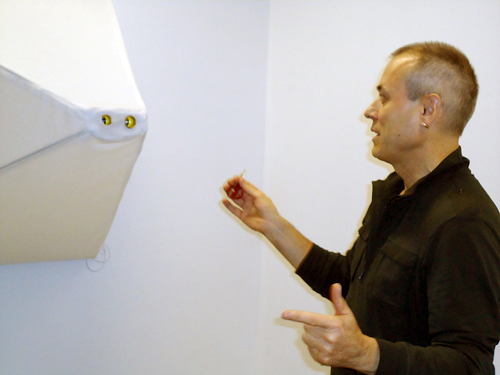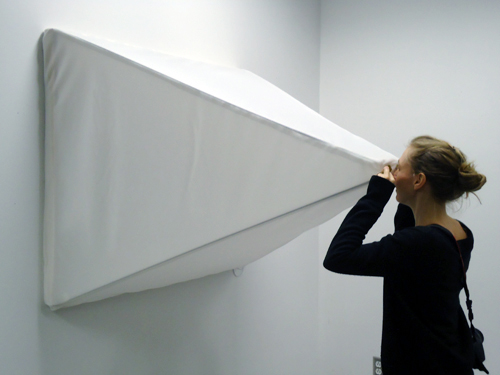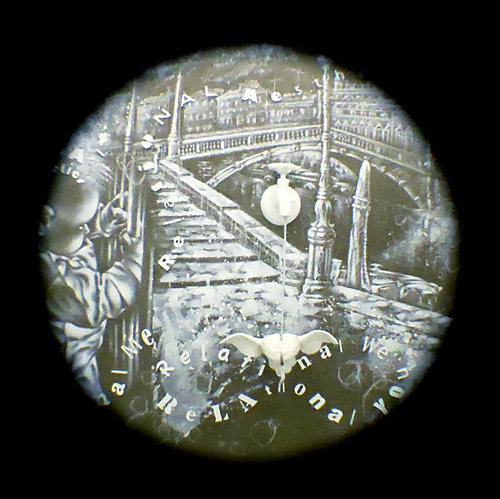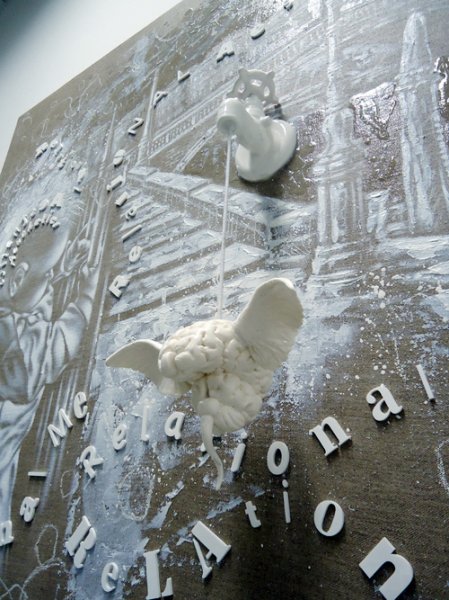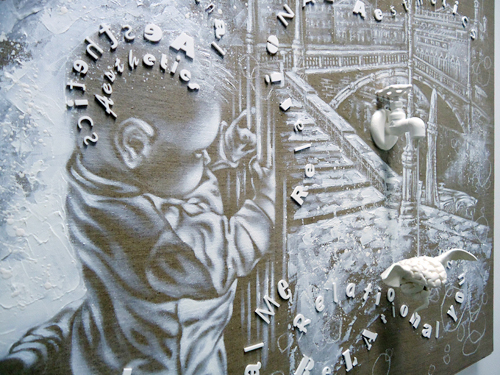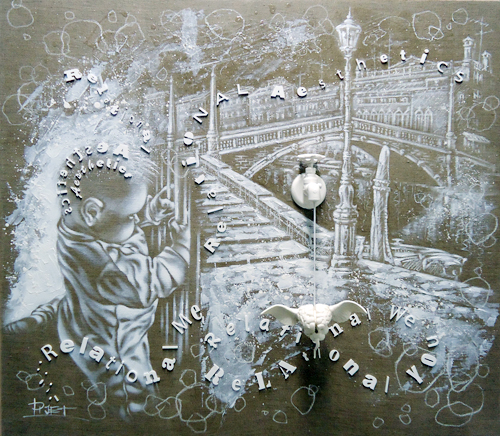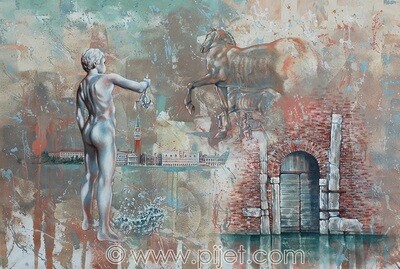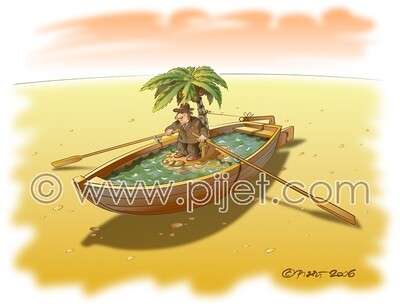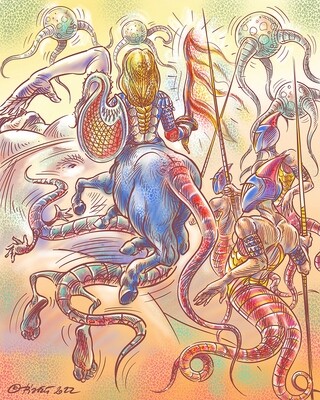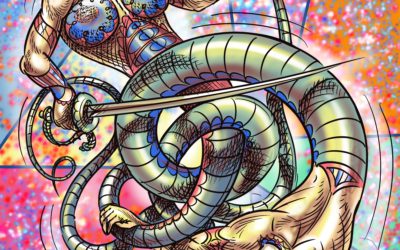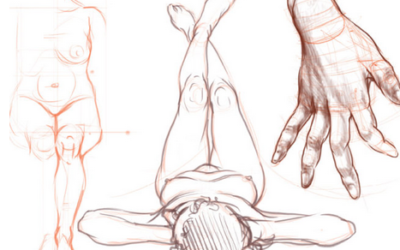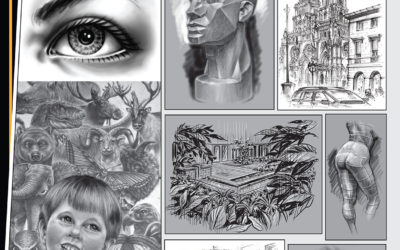The concept: Camera Bianca: Relational Me was born as a composite of various inspirations of which the leading force was the Marcel Duchamp’s final farewell artwork titled Étant donnés (1946-1966). Duchamp was working on this composition for twenty years in secret of his Greenwich Village studio in New York. In many ways this particular piece of art was permanently installed in Philadelphia Art Museum in nineteenth sixty-nine after the artist’s death following his precise instructions. Another set of inspirations came from the artists participating in this year 54th Venetian Biennale of Art, especially the exhibitions at the Palazzo Pisani and the Azerbaijan Pavilion. In the Palazzo Pisani the artist Tamara Kvesitadze (Georgia) presented three-dimensional pieces, which interacted within the palazzos space by using the movement sensors. In the Azerbaijan Pavilion the artist Aidan Salakhova created dimensionality trough the application of three-dimensional static forms in her reflective compositions. The cogitative observation of these artworks provoked in myself the question: how will the incorporation of one color drawing and sculpted elements interact together in a reversed optical space? Furthermore, I wandered how to build a structure, which would initiate the one on one encounter in order to generate aesthetic experience that generates curiosity and creates a perceptive puzzle to provoke the spectator’s receptive senses to react aesthetically. I was interested in creating a close separated environment for the visual perception of realities through the composite symbolism of various elements, which I have integrated into the final composition. The final artwork illustrates to certain degree the multilingual introductory text contained in the flyer from the Palazzo Pisani exhibition of the Georgian artist Tamara Kvesitadze written by Slager (2011):
Deluze elucidates how art idiosyncratically generates a form of thought and knowledge that is able to contribute to an understanding of the human condition – a form of thought and knowledge that is very different from the discursive modalities philosophy deploys. Because of that dynamic of being different, the visual production of ideas can never be comprised in static systems of signification or well-defined frameworks of interpretation (p. 4).
The question in my artistic endeavor was: how to reflect the process of the visual cognitive interaction between the artist’s composite of creative forms, which are suggested to the spectator as an aesthetic language of communication? The application of reversed binocular optics as a filter distorting the realistic perception of the proposed surfaces permits the spectator to experience the artwork’s intrinsic content, while sharing takes place in the closed intimate space. The pyramidal white box separate the chosen creative space from the external world allowing to the spectator to participate in the process of reception of the aesthetic impulses, which provokes the spectator’s aesthetic responses. At the same time the separation of the artwork’s interior space from external distraction and interference of various structural and physical forms, permits the viewer to focus on the process of assessing and explore better the encoded symbolism of the artistic composition, which is suggested to him/her.
The title of my artwork Camera Bianca: Relational Me symbolically consists of two parts, which are united together by the concept of visual perception of three dimensionality of the gallery space. In this particular artwork I am interested in creation of dimensionality of objects through various optical means. The first part of the title, Camera Bianca, reflects as a form the creative womb, which separates the imaginary creative world of artistic fantasy in opposition to the Camera Obscura principles to reflect reality. The Camera Obscura mirrors the reality and the imaginary liberty is not possible. The Camera Bianca is not about recreation of reality, but about its creative encoded deformation. The proposal to the spectator is to explore the creative composition through reversed optics using binoculars symbolizes how the viewer perceives the artwork. The artist’s imaginative world of suggested aesthetics to the receptive spectator is always distorted by the cognitive incompatibilities. The binoculars principal role is to approach the desired area or the objects of our interest in order to let us see closer and enjoy somehow the normally unreachable distanced zones without the necessity of displacement. It also distorts the real perception of things, but does not create dimensions. However, when used in reverse it creates an artificial sensation of three-dimensional space. In consequence any composition of line and form, when looked through the reversed binoculars, cause a kind of faulty visual dimensionality.
The second part of the title, Relational Me, is conceived using a coded symbolism of compositional elements, which reflects on my personal voyage through the process of my earthy existence. I chose for this purpose a fragment of my most reoccurring contrasted thoughts united by the territory of the canvas I assigned to them. The figurative forms are placed in a disruptive way in order to create the impression of fragmentary thoughts interacting with each other and through the visual content create narrative context to explore. I was looking for a way to enhance the dimensionality of my artwork through narrative, which was conceived on the raw linen of canvas. I found out that when using white on the linen natural surface a contrast was created between these two colors giving an impression of three-dimensional space. The application of the reversed binocular optics allowed an additional spectrum to the artwork’s narrative and provokes the spectator’s visual senses to perceive the enhanced dimensional aesthetics.
To conclude, I found this experience motivating for further explorations using the dimensionality of sculptural and flat surfaces, which could be enhanced with the use of various optic configurations and different contrasted materials. This kind of experimental practice engages the spectator in relational communication with the artist’s creative narratives projected and shared in the intimacy of a specified and enclosed space for the visual experience, which is intentionally deformed through the optical means in order to reflect the cognitive aspects of the process of seeing and perceiving. Following the Rancière’s ideas, which reflect on the question of dominance and subjection during the process of the viewer’s exposure to the creative activity of artistic expression, in the case of Camera Bianca: Relational Me the viewer and the artist balance harmoniously aspects concerning subjection.

